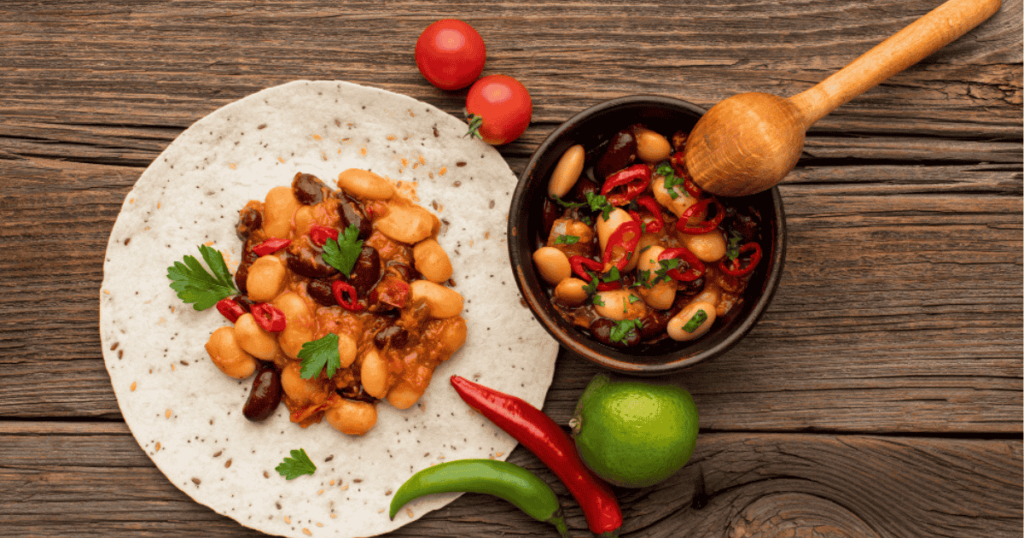
Is Nicaraguan Food Spicy? Exploring Traditional Flavors
When people think of Latin American cuisine, the flavors of Mexico, Cuba, or Peru may come to mind, but Nicaraguan food has a unique identity. One common question for those unfamiliar with this cuisine is: Is Nicaraguan food spicy? Let’s dive into this flavorful topic and explore what makes Nicaraguan food so special, its spice level, and the traditional dishes that define it.
What is Nicaraguan Food?
Nicaraguan cuisine is a delightful fusion of indigenous, Spanish, and Creole influences. This combination creates a hearty, flavorful, and colorful selection of dishes. What is Nicaraguan food exactly? It’s a cuisine that emphasizes fresh, local ingredients such as corn, plantains, beans, rice, meats, and seafood.
Unlike the heavily spiced foods of some Latin American countries, Nicaraguan dishes tend to focus on simplicity, allowing the ingredients’ natural flavors to shine through. Here are some staple dishes of Nicaraguan cuisine:
Traditional Nicaraguan Dishes
- Gallo Pinto: This iconic dish consists of rice and beans, a staple combination in Nicaraguan households. Often served for breakfast, it’s accompanied by eggs, cheese, and plantains.
- Vigorón: A street food favorite, vigorón is made with boiled yucca, pork rinds, and cabbage slaw, usually served on a banana leaf.
- Nacatamal: Nicaragua’s version of tamales, nacatamales are made from a dough of cornmeal and filled with pork, rice, potatoes, and seasonings, all wrapped in banana leaves and boiled.
- Indio Viejo: This traditional dish is a rich stew made with shredded beef, tomatoes, onions, and bell peppers, often thickened with cornmeal.
Regional Influences on Nicaraguan Food
Nicaraguan cuisine also varies by region. The Pacific coast is known for seafood dishes like fried fish and shrimp stews, while the central and northern regions are famous for their cattle and dairy farms, contributing to a diet rich in beef and cheese. The Atlantic coast, on the other hand, features Afro-Caribbean influences, with coconut milk and seafood playing central roles in dishes like rondón, a seafood stew with coconut broth.
Is Nicaraguan Food Spicy?
The Role of Spices in Nicaraguan Cuisine
Unlike some of its Central American neighbors, Nicaraguan food is not typically spicy. The cuisine favors more subtle and savory flavors rather than the heat of spicy peppers. This doesn’t mean that Nicaraguans don’t enjoy spiced foods—chilies and peppers are present, but they are used more sparingly than in countries like Mexico.
Instead of relying on heat, Nicaraguan dishes are flavored with herbs like cilantro, oregano, and achiote. For those who prefer a kick of heat, hot sauces and pickled chilies are often offered on the side, allowing diners to adjust the spice level according to their preferences.
Nicaraguan Salsas and Condiments
If you’re looking for spice in Nicaraguan cuisine, it can often be found in the sauces and condiments served alongside main dishes. One popular condiment is chilero, a vinegar-based salsa made with pickled onions, carrots, and jalapeños, which adds a zesty, tangy flavor with a hint of heat. Another is salsa picante, a homemade hot sauce made from chili peppers and tomatoes.
Spicy Variations in Nicaraguan Cuisine
While most Nicaraguan food isn’t inherently spicy, some regions or households may use more heat depending on local tastes. For example, in rural areas or on the Caribbean coast, you might find dishes with a bit more spice due to the use of fresh chilies in cooking. However, even in these cases, the spice is usually mild compared to the fiery heat found in other cuisines.
Comparing Nicaraguan Food to Other Latin Cuisines
To further understand whether Nicaraguan food is spicy, it helps to compare it with other Latin American cuisines. While Mexican food often incorporates hot chilies like jalapeños, habaneros, or serranos into its core recipes, Nicaraguan food uses milder flavors. Peruvian cuisine, famous for its use of aji peppers, can be quite spicy depending on the dish, but again, Nicaragua’s focus is more on balancing flavors than overwhelming heat.
Nicaraguan Cuisine: A Balance of Flavors
Although spice is not the primary feature of Nicaraguan food, the cuisine offers a diverse range of flavors that are rich, hearty, and comforting. The natural sweetness of plantains, the tang of citrus, the savory richness of meats, and the occasional hint of spice come together to create a balanced dining experience.
The use of tropical fruits like mango, papaya, and coconut also adds another layer of complexity to many dishes, offering refreshing sweetness to balance out the savory components.
The Importance of Fresh Ingredients
One thing that sets Nicaraguan food apart is the reliance on fresh, local ingredients. Whether it’s the yucca in vigorón, the plantains in gallo pinto, or the fresh seafood from the Pacific and Atlantic coasts, Nicaraguan cuisine prides itself on the quality of its raw materials. This dedication to freshness ensures that the food is not only flavorful but also healthy and nourishing.
Exploring Nicaraguan Food at El Nica Chef
If you’re curious to explore what is Nicaraguan food and taste the traditional flavors for yourself, El Nica Chef in Beacon, NYC, offers an authentic culinary experience. At El Nica Chef, you can indulge in classic dishes like Gallo Pinto, Vigorón, and more, with the option to add a spicy kick if desired. Our dishes are crafted with care, showcasing the best of Nicaragua’s culinary heritage.
Conclusion
To answer the question, Is Nicaraguan food spicy?, the answer is not usually—Nicaraguan food tends to favor rich, savory flavors over heat. However, for those who enjoy a bit of spice, there are plenty of condiments and salsas to elevate the heat level. Whether you prefer mild or spicy, Nicaraguan cuisine offers a delicious, balanced approach to flavor that is sure to satisfy.
Visit El Nica Chef in Beacon, NYC, and embark on a flavorful journey through Nicaragua’s traditional dishes.
